Meat Processor Dry aging vs Wet Aging YouTube

Wetaging vs. Dryaging YouTube
Dry-aged beef delivers a different experience altogether. Because the enzymes have been allowed to do their work, these steaks are very tender. The aroma tends to be more pungent, often with notes of buttered popcorn. The flavor of dry-aged steaks is more concentrated than wet-aged meat, and it gets stronger the longer it is aged. Steaks that.

Meat Processor Dry aging vs Wet Aging YouTube
Dry Aging vs. Wet Aging In the world of steak, the aging process is a critical determinant of taste, tenderness, and overall dining experience. Two primary methods of aging meat, dry aging, and wet aging, offer distinct approaches to achieving these desired attributes.
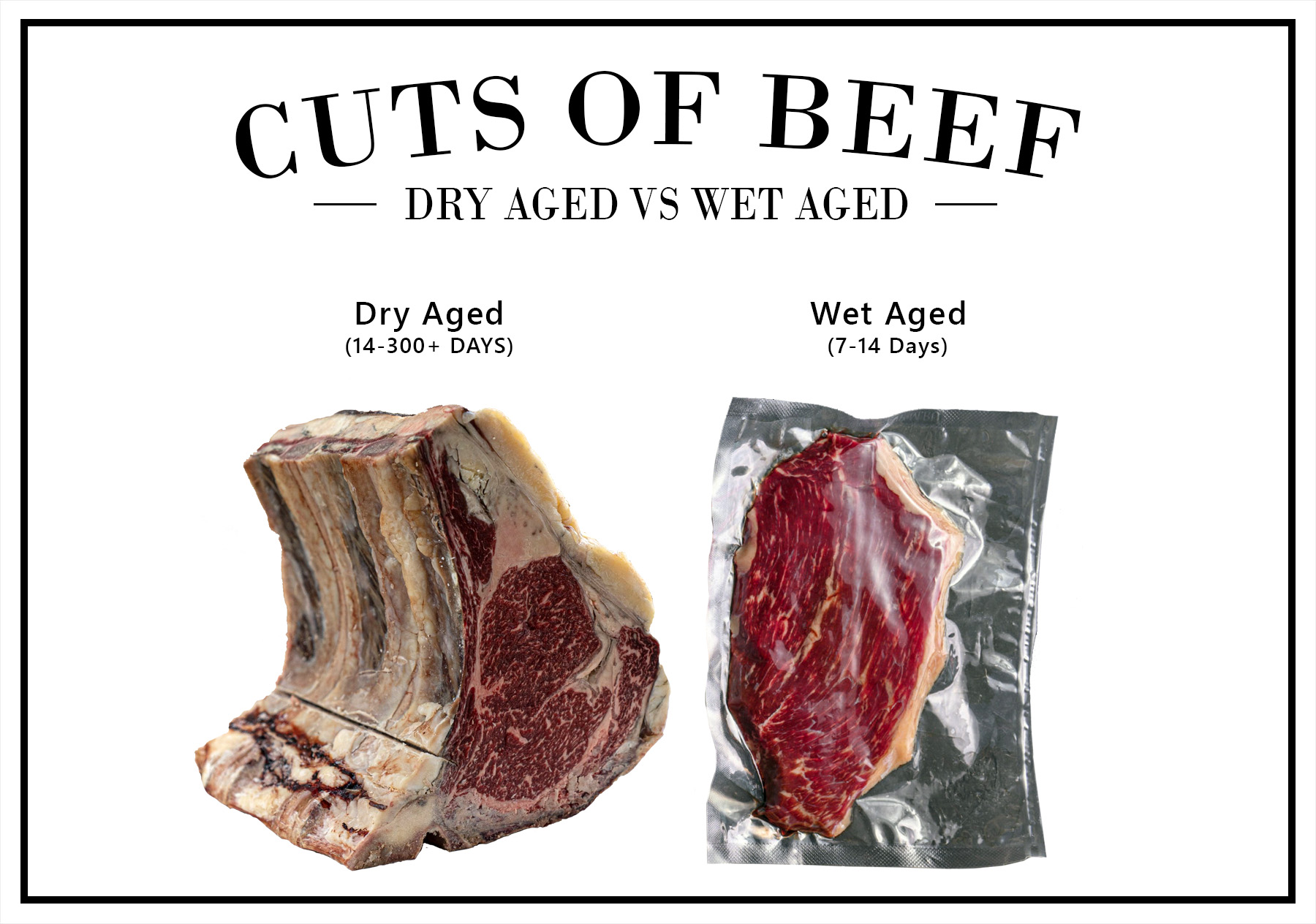
Dry Aged Vs Wet Aged Steak
Wet-aging steak tastes better in a lean cut of beef like a flat-iron steak, where the steak is less marbled with fat. Beef cut for dry aging starts out much thicker than wet aged meat but will lose considerable mass during the aging process. In the end, they both produce an excellent tender and juicy steak.
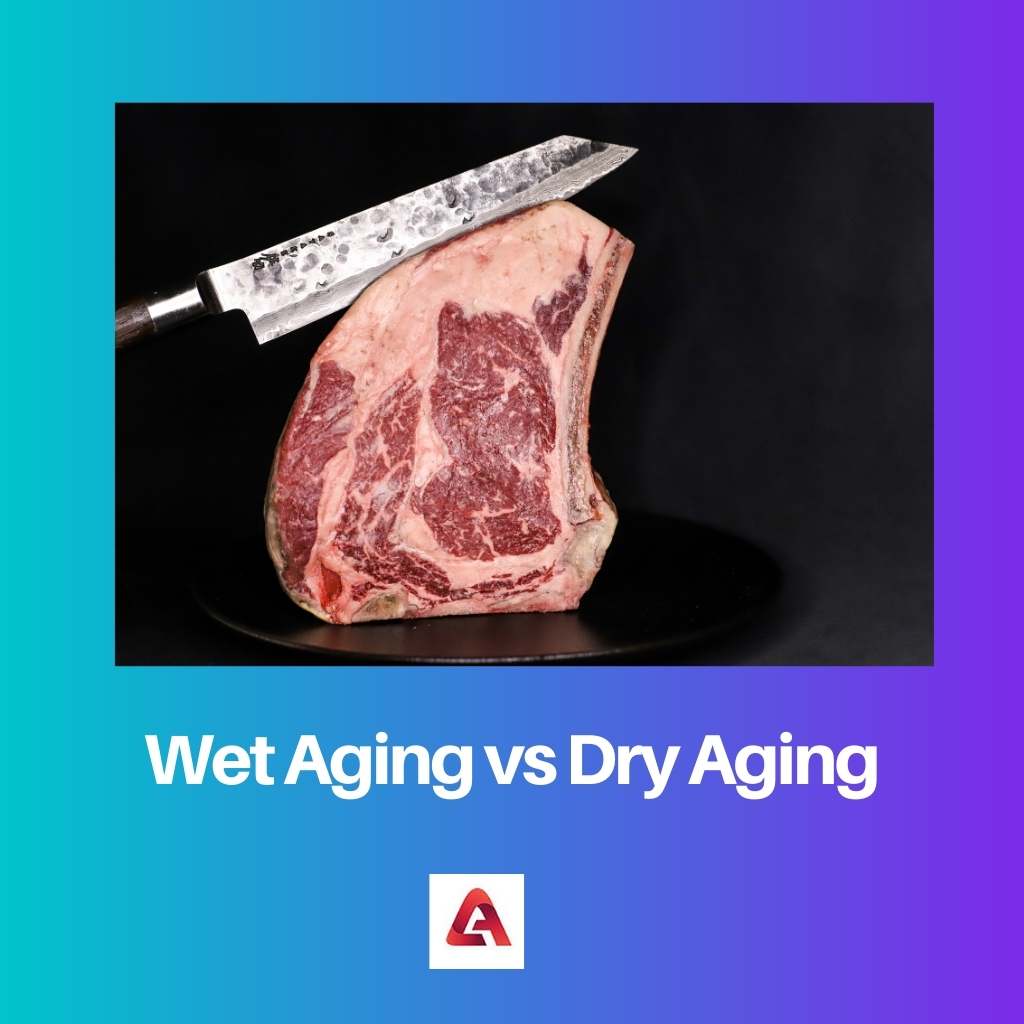
Natte veroudering versus droge veroudering verschil en vergelijking
Dry aging, on the other hand, allows the meat to breathe, lose water (which increases its "beefiness" since there is now less water and but the same amount of muscle fiber), and get acted upon by.

Discover the Difference Between WetAged and DryAged Wagyu Beef The
For instance, wet-aged meat has a slightly metallic, fresh flavor because it is aged in its juices and blood. Because wet-aging usually lasts shorter than dry -aging the meat is less tender and doesn't have a slightly sour flavor like dry-aged meat. Dry-aged meat is aged longer than wet-aged meat which gives the enzymes more time to tenderize.
:max_bytes(150000):strip_icc()/dry-aging-beef-331496_FINAL-12c5aae3a0ea4714a27d7911b77ae345.png)
How to Dry Age and Wet Age a Great Steak
Dry aging causes meat to lose some of its moisture content, typically reducing levels from around 75% to 70% moisture. This gives dry-aged meat its "beefier", richer flavor. The longer the meat is dry-aged the more tender it will be, with a stronger flavor. However, dry-aging meat also reduces its volume.

wet nerds Photo
Wet aging of steaks is typically done by packing them in vacuum-sealed bags. This process allows enzymes to break down connective tissue while preserving moisture inside the meat. The result is a tender, juicy steak with a milder flavor than dry-aged steaks. On the other hand, dry aging steaks involve hanging beef cuts for weeks in a.

Dry Aging vs. Wet Aging Meat Guide Grill Baby Grill
Dry aging involves hanging the meat in a controlled environment to intensify its flavor, while wet aging retains moisture and results in a milder taste. Dry - aged steak has a nutty and rich flavor, but it is expensive and not suitable for all cuts of beef. Wet - aged steak is more affordable, juicier, and has a fresher flavor profile.
:max_bytes(150000):strip_icc()/how-dry-amd-becomes-wet-amd-4770108_v2-4e8bdd9d3c874c63a1a852bde87b7c6d.png)
How Dry AMD Wet AMD
As will become clear when we discuss dry aging, there is a much higher cost eliment to doing dry aging over wet, and supermarkets need to keep costs down to attract customers into thier stores. Wet Aged Beef is Sealed in it's Own Juices Dry Aged Beef. Dry aging beef is a little more complex than just cutting a steak and sealing it in a.
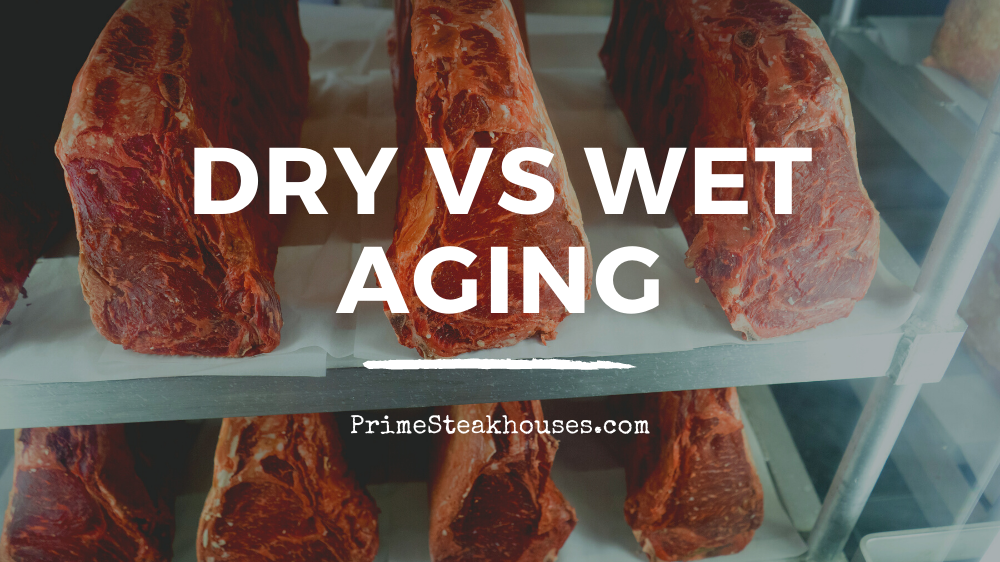
Dry vs Wet Aging Steak Aging Processes Key Differences, Pros & Cons
Dry aged steak produces a flavor profile that's distinct from its wet aged counterpart. The dry aged flavors tend to have a depth and complexity that's a pleasure unlike any other for steak enthusiasts. Wet aged steak, on the other hand, retains a more traditional steak flavor. The meat is tender, juicy, and has a classic flavor that most are.

What’s the Difference? DryAging vs. WetAging Beef Wet aged beef
Dry aging occurs in a controlled, open-air space, while wet aging sees a cut of beef vacuum sealed in its own juices. The first produces beef that's nutty, earthy, and robust. The second intensifies the beef's natural flavors and aromas. In this guide, we'll discuss how beef is aged, the differences in taste and preparation between wet and.
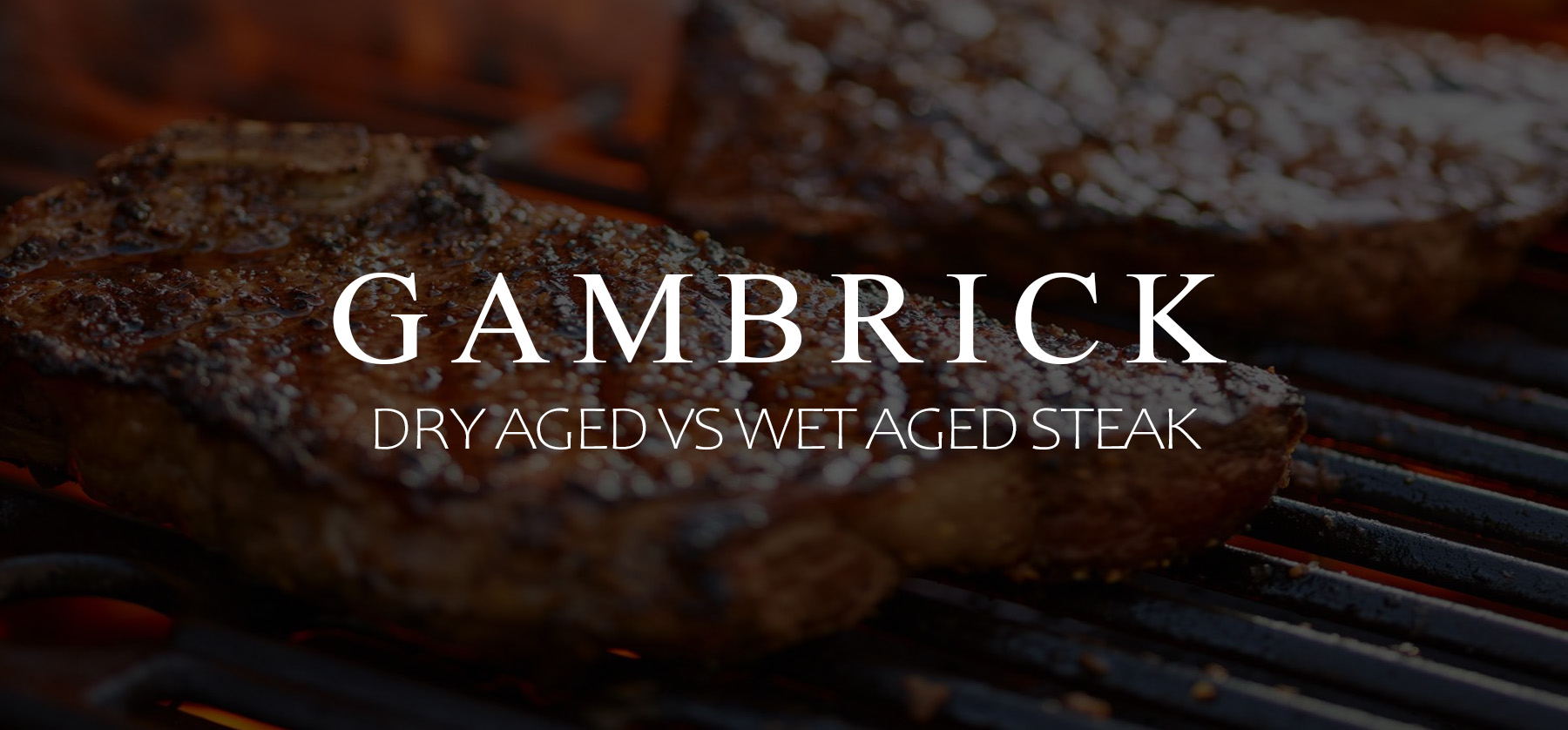
Dry Aged Vs Wet Aged Steak
Both steaks see an increase in tenderness. Dry aging breaks down connective tissues while wet aging allows the meat's natural enzymes to break down muscle fibers and increase tenderness. Try Home Chef - Family Meals Made Easy. 4-serving meals starting at $3.77 per serving (up to 25% cheaper than HelloFresh).

Dry Age VS Wet Age STEAK! Which is KING?! YouTube
Beef farmers Lone Mountain Wagyu also states that dry aging creates less sellable steak out of each cut of meat than wet aging, as butchers must "face," or cut off the exterior, for the meat to pass USDA standards, removing the fuzzy layer. If you're unfamiliar with meat production, you may think that once you slaughter, clean, and butcher the.

Dry Aging vs Wet Aging What's the Difference Eatlords
Whichever method you choose, shoot for medium-rare or 130°F. Move the steaks to a lower heat and cook for another 4-5 minutes. Remove the steaks and let them rest for at least five minutes but as much as 10 minutes before enjoying. Dry-aged and wet-aged steaks are both worth a try. Both hold the wisdom and tenderness that come with time.
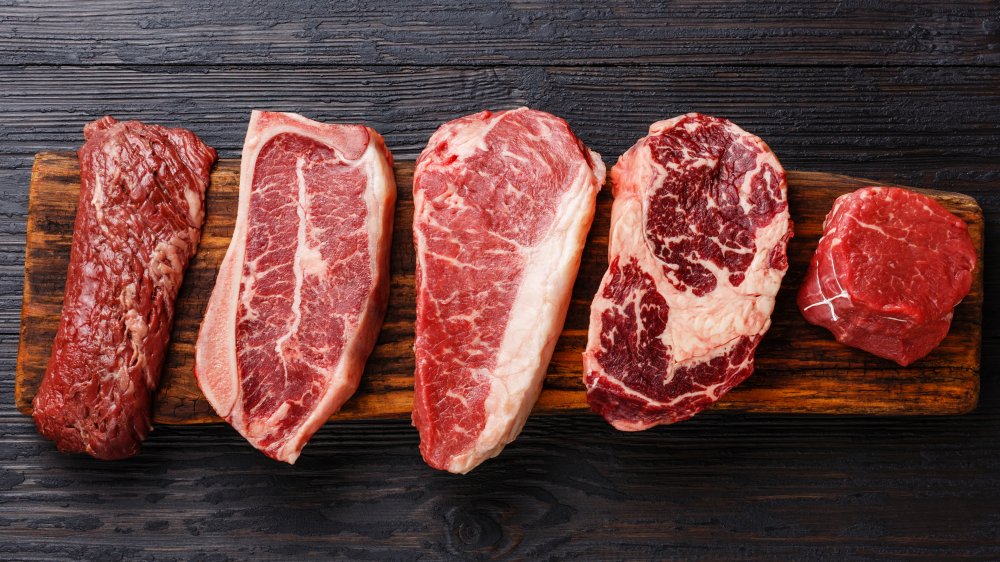
Here's The Real Difference Between Wet Aging And Dry Aging
Shifting to the logistical side of beef aging, wet aging is much more cost-effective, faster, and easier to do on a mass scale. Because the beef is aging as it is en route to its distribution outlet, the whole process can move much faster than the dry-aging process. From a productivity standpoint, wet aging could likely be considered better.

Dry Aging vs. Wet Aging la Frollatura della Carne Carne Genuina
Whether dry-aged or wet-aged beef is better has actually become quite a debate in certain foodie circles. Dry-aging has centuries of tradition on its side, while wet-aging is really the new kid on the block. Is one really better than the other? You decide.All meat benefits from some amount of aging before being sold and consumed. In the days after slaughter, enzymes go to work on the muscle.